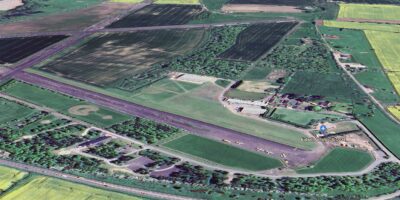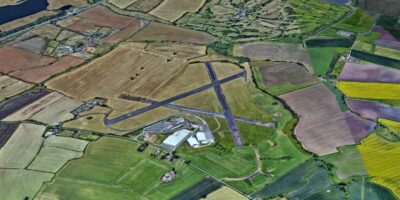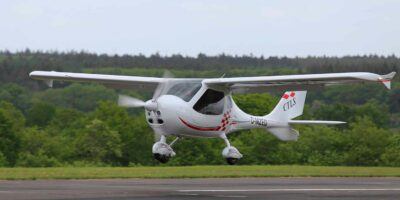Sustainable Aviation Fuel – known as ‘SAF’ – is rapidly becoming to the ‘go-to’ solution for aviation companies looking to reduce their carbon footprint. Now helicopter manufacturer Bell has made the first flight of its 505 helicopter burning the fuel. It’s a first for a single-engine helicopter.
Bell collaborated with Safran Helicopter Engines (which supplies the Arrius 2R engine fitted to the 505), Neste (which supplies SAF), GKN Aerospace and Virent Inc (which makes SAF) to make the Bell 505 flight possible.
“This flight is a monumental achievement for sustainability and decarbonization in the rotorcraft industry,” said Michael Thacker, executive vice president of Bell.
“Showcasing a single engine aircraft’s flight capabilities with 100% SAF signals Bell’s commitment to alternative fuel usage and builds on its sustainability practices in its flight operations.”

The team behind Bell’s first flight of the SAF-burning 505. Photos: Bell
Valentin Safir of Safran Helicopter Engines added, “SAF is one of the key pillars in our strategy to decarbonize the helicopter industry. Our engines are certified to operate on up to 50% SAF and our objective is to certify in the coming years the use of 100% SAF, which can potentially result in carbon lifecycle emissions reductions by up to 80%.”
SAF is made from used cooking oil or other bio-based feedstocks and typically must be blended with petroleum products because it doesn’t include a component called ‘aromatics’ required to meet today’s aviation fuel specifications.
Virent manufactures an aromatics component made from renewable plant sugars, which was added to Neste’s neat SAF, eliminating the need to blend SAF with petroleum fuel. The SAF supplied for this test flight by Neste and Virent is therefore a 100% drop-in replacement requiring no engine modifications.
Bell’s own training fleet and demonstration aircraft currently use SAF in their operations. Textron, whiuch owns Bell and other aviation brands, says it has a goal for a 20% reduction in greenhouse gas emissions by 2025.
Bell Helicopters













